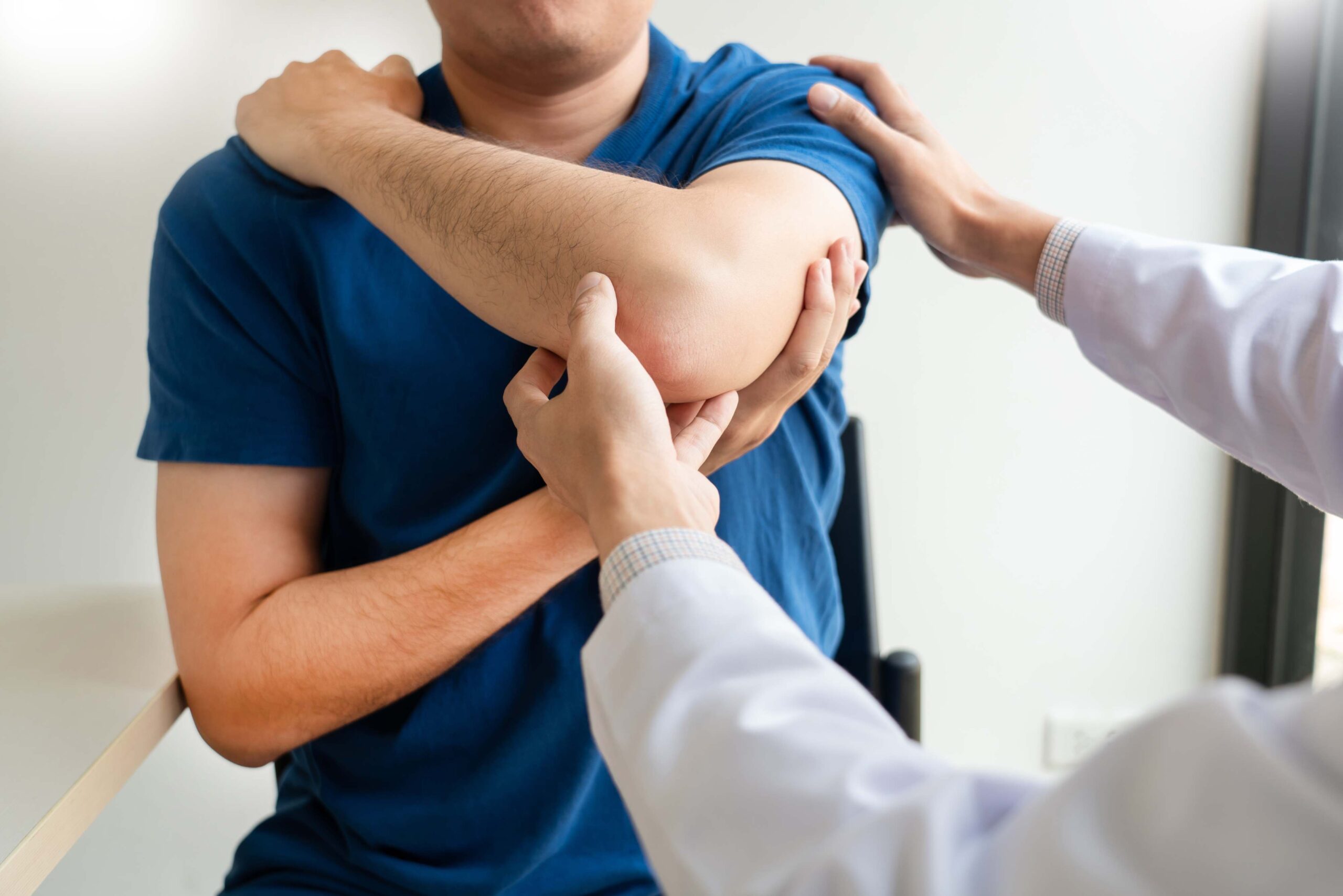Ergonomics and Safe Patient Handling
April 2024
Reading time: 4 minutes

Improper patient handling may injure patients and employees. Unsafe patient lifting may result in falls, skin tears, joint dislocations, fractures, inadequate mobilization, and pain.2
Key Concepts
- Defining Ergonomics
- Safe Patient Handling Programs
- Employee Responsibility
Reducing Risk
In the course of daily activities, chiropractors are exposed to various physical risks, such as lifting heavy items, bending, reaching overhead, pushing and pulling heavy loads, working in awkward body postures, and performing the same or similar tasks repetitively.1 These risk factors increase the likelihood of musculoskeletal disorders (MSDs) and the potential for injury.
To lessen these risks, chiropractors need to educate their employees about ergonomics and safe patient handling and movement. Ergonomics, the study of people’s efficiency in their working environment, helps lessen muscle fatigue, increases productivity, and reduces the number and severity of work-related MSDs.3.
15 Risk Tips
Following are 15 risk tips for chiropractors to consider when assessing their current efforts in promoting ergonomics and safe patient handling and movement.4
- Define clear goals and objectives for the ergonomic process, solicit input from employees, assign responsibilities to designated staff members, and clearly communicate the process to all employees.
- Create an environment in which employees can assess, identify, and provide important information about hazards in their facilities, including processes for assessing environments, instituting corrective actions, and evaluating the progress of implemented actions.
- Ensure that employees are educated about ergonomics and its benefits as well as ergonomic-related concerns in the workplace. Also, encourage employees to report symptoms of MSDs early and emphasize the importance of doing so.
- Encourage employees to voice their concerns and suggestions for reducing exposure to risk factors and hazards to help prevent or reduce the development of symptoms of MSDs and serious injuries. Implement solutions to control identified risk factors and hazards.
- Devise a written safe patient handling and movement program that incorporates specific measures to prevent injury. Include provisions for training and assistance for employees on equipment use. Ensure that all employees are educated about this program and its requirements.
- Explore how your facility’s patient handling procedures might affect patient care. Manual lifting, repositioning, or transfer can increase patients’ risk of falls, fractures, bruises, and pressure injuries. Using safe patient handling with mechanical equipment may reduce risk.
- Ensure that the facility’s safe patient handling and movement program includes lifting guidelines that minimize the use of manual lifting, repositioning, or transfers (e.g., through a “minimal lift” policy).
- Instruct healthcare employees on the basic physics in safe patient handling, such as (a) moving something takes less effort when it’s close to the body than when it’s relatively far and (b) pushing objects is easier than pulling them.
- Provide employees with easy access to equipment (e.g., slide sheets and portable or ceiling-mounted lifts) to assist with patient handling tasks. Include special accommodations for bariatric patients in the facility’s safe patient handling policy or program.
- Review the facility’s OSHA-recordable injury log, check workers’ compensation records, and consult with human resources to quantify employee MSDs from patient handling events and the associated costs.
- Identify the occupations (e.g., registered nurses, nursing assistants, etc.) or root causes of activities with the highest risk of injury in your facility to more effectively target interventions.
- Identify the units (e.g., departments, floors, wards) that have the highest rates of worker injuries associated with handling patients in your facility to more effectively target interventions.
- Identify which activities (e.g., lifting, repositioning in bed, lateral transfers, etc.) account for the highest number or severity of injuries in your facility to more effectively target interventions.
- Direct workers to gather patient handling and mobility equipment accessories and check battery status before shifts begin.
- Integrate patient handling considerations into the design (e.g., installing or providing storage for patient handling equipment) when planning any renovation and/or new construction projects.
Endnotes
[1] Occupational Safety and Health Administration. (n.d.). Ergonomics. Retrieved from www.osha.gov/ergonomics
[2] ECRI. (2020, March 6). Safe patient handling and movement. Retrieved from www.ecri.org
[3] Occupational Safety and Health Administration, Ergonomics.
[4] The risk tips in this publication are adapted from the following resources: Occupational Safety and Health Administration, Ergonomics; Occupational Safety and Health Administration. (n.d.). Safe patient handling: A self-assessment. Retrieved from www.osha.gov/sites/default/files/3.8_SPH_self-assessment_508.pdf; ECRI, Safe patient handling and movement; Occupational Safety and Health Administration. (n.d.). Safe patient handling program checklist. Retrieved from www.osha.gov/sites/default/files/3.2_SPH_checklist_508.pdf
This document does not constitute legal or medical advice and should not be construed as rules or establishing a standard of care. Because the facts applicable to your situation may vary, or the laws applicable in your jurisdiction may differ, please contact your attorney or other professional advisors if you have any questions related to your legal or medical obligations or rights, state or federal laws, contract interpretation, or other legal questions.
MedPro Group is the marketing name used to refer to the insurance operations of The Medical Protective Company, Princeton Insurance Company, PLICO, Inc. and MedPro RRG Risk Retention Group. All insurance products are underwritten and administered by these and other Berkshire Hathaway affiliates, including National Fire & Marine Insurance Company. Product availability is based upon business and/or regulatory approval and may differ among companies. © 2024 MedPro Group Inc. All rights reserved.
Additional Risk Tips content

How to Start a Chiropractic Cash Practice
Thinking of starting or transitioning to a chiropractic cash practice? This guide walks you through the benefits, challenges, and essential steps…

Maintaining Professional Boundaries in Chiropractic Care
Maintaining professional boundaries is essential in healthcare. When boundaries are crossed —or the patient perceives they are crossed — the…

Finding Community in Your Chiropractic Career
A chiropractic career can be demanding, and it’s easy to feel alone in the journey. Being isolated can hinder your…
This document should not be construed as legal or medical advice and should not be construed as rules or establishing a standard of care. Because the facts applicable to your situation may vary, or the laws applicable in your jurisdiction may differ, please contact your attorney or other professional advisors if you have any questions related to your legal or medical obligations or rights, state or federal laws, contract interpretation, or other legal questions.
MedPro Group is the marketing name used to refer to the insurance operations of The Medical Protective Company, Princeton Insurance Company, PLICO, Inc. and MedPro RRG Risk Retention Group. All insurance products are underwritten and administered by these and other Berkshire Hathaway affiliates, including National Fire & Marine Insurance Company. Product availability is based upon business and/or regulatory approval and may differ among companies.
© MedPro Group Inc. All rights reserved.